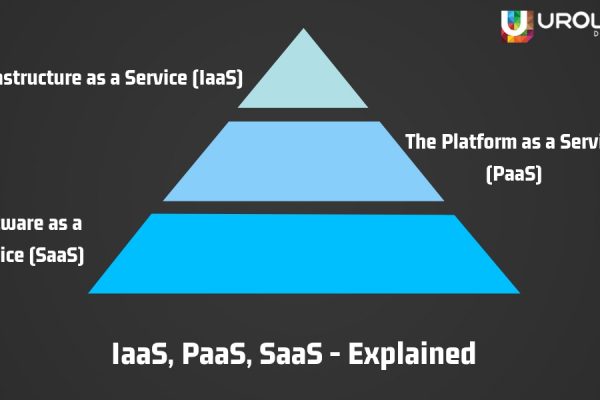As technology advanced, it became evident that cloud managed services are becoming an essential component of businesses’ IT environments.
While IT leaders have suggested that managed services may employ the cloud, automation, and cutting-edge computing technologies to make managed services more proactive in 2022, managed services are now focused on lowering capital investments. As a result, more application outsourcing services—indeed, more cloud consulting services—will start to appear soon to support businesses. To survive and remain competitive in the face of exponential changes in their industry, organizations should adopt a digital environment.
According to market research by Facts and Factors, in 2021 the global cloud computing market size and share were valued at approximately US$429 billion. It was expected to reach approximately US$1025.7 billion by 2028, increasing at a CAGR of 15.80% between 2022-2028.
Cloud Computing, how big is the industry?
The on-demand, pay-as-you-go delivery of IT resources through the Internet is known as cloud computing. You can use technological services, computing power, storage on an as-needed basis from a cloud provider. This way you need not have to purchase, operate, and maintain servers and data centers.
In its simplest form, cloud computing uses servers, storage, databases, networks, software, analytics, and information on the Internet to deliver faster innovation, scaling business resources and economies. In most cases, you can reduce operating costs by simply paying for the cloud services you use.
Some of the cutting-edge technologies propelling the cloud market trends include big data, artificial intelligence (AI), and machine learning (ML). The top three factors that are driving the global cloud computing services are the safety of confidential data, expediting disaster recovery (DR), and meeting regulatory requirements.
The growth of new technologies is fueled by several factors, including the rising volume of data produced by websites and mobile applications, the growing importance of developing customer-centric applications to enhance the user experience, and the management of capital expenditures (CAPEX) and reduction of operating costs.
Cloud Computing Market Dynamics
According to cloud monitoring services companies, as organizations continue to shift their workloads to digital formats from conventional channels, the demand for cloud computing has increased.
The work-from-home concept has been embraced by many companies across a range of industries to maintain employee well-being and operational effectiveness, which has raised the need for Software-as-a-Service (SaaS)-based solutions.
Infrastructure as a Service (IaaS) is more in demand. It is because of the rising demand for video-on-demand (VoD) to satisfy customer needs. Cloud computing makes it possible for businesses to respond quickly and efficiently to shifting market conditions. The procedure for consuming technology is made simpler. This strategy has made it possible to build incredibly engaging customer experiences in ways that were unthinkable before.
People’s and businesses’ behavior has been changed by cloud computing, which has made it possible for various business lines to get things done by getting over technical regulations. The choice of vendors and technologies, as well as investment plans and digital business decision-making processes, are all being influenced by cloud developments. As said above, businesses are compelled by growing digitization. Business leaders are required to scale up their IT infrastructure for agility and operational cost-effectiveness.
Analysis of Cloud Computing Market Segments
The verticals used globally to segment cloud computing are service model, deployment model, and organization size.
Segmentation based on organization size
Large firms have the largest market share in terms of organization size. Demands are driven by factors like decreased operating expenses, enhanced collaboration, better flexibility, and quicker time to market. Businesses can assign mundane jobs to technology that can finish them more rapidly, thanks to cloud computing. Therefore, it is projected that higher usage in big businesses to simplify operations will help the segment’s growth.
The demand for cloud computing services would increase during the predicted period since there would be an increase in the number of large businesses in both developed and emerging nations.
Utilizing Verticals Segment Analysis
The BFSI segment has the biggest revenue share among the verticals. Lenders have adopted the digital revolution, with cloud computing playing a significant role in this approach, as a result of the rise in online banking activities.
Businesses in the BFSI sector have benefited from the use of cloud computing by seeing cost savings, more innovation, improved customer interactions, and increased flexibility.
The usage of cloud services for the management and storage of client data might be the reason for expansion. Payment gateways, online fund transfers, digital wallets, are just a few of the services that are expected to play a big part in the shift to cloud deployment in the financial sector.
Competitive Environment
The study includes in-depth analyses and development tactics used by the top rivals, as well as qualitative and quantitative research on the worldwide cloud computing market. The research also includes information on the competitiveness of the major market rivals and an in-depth examination of them. The study also identifies and examines crucial business tactics employed by these key market participants, such as contracts, affiliations, and mergers and acquisitions (M&A). The study looks at each company’s global reach, rivals, service offerings, and standards, among other things.
The top competitors vying for supremacy in the cloud computing market are Google, Microsoft, Amazon, Adobe, Oracle, Salesforce, and SAP.
Conclusion
According to the research, the market for cloud computing is anticipated to expand at a CAGR of about 15.80 percent in 2022-2028).
The Cloud Computing Market was estimated to be worth US$ 429 billion in 2021, and because of the given driving factor the cloud market is anticipated to significantly grow by 2028.
In terms of service model, the Software as a Service (SaaS) category generated the largest revenue share. The private sector, which accounted for most business, ruled the cloud computing industry. It looks like cloud monitoring services are predicted to provide a significant number of growth opportunities throughout the forecast year.







